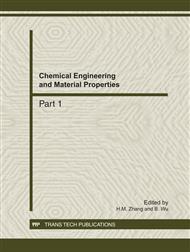p.540
p.545
p.549
p.554
p.559
p.564
p.569
p.575
p.580
Effect of Extrusion Time on Microstructure and Mechanical Properties of AZ31B Magnesium Alloy Prepared by Solid-State Recycling
Abstract:
AZ31B magnesium alloys recycled by solid-state process from oxidized chip were extruded repeately. Microstructures and mechanical properties of recycled alloys for different extrusion times were studied. With the increasing extrusion times, the breaking degree and homogeneity of oxide increase and stream line feature of oxide become less obvious. Second extrusion make dynamic recrystallization microstructure of recycled alloy become more homogeneous and fine, but the microstructure is not refined furtherly after 3 and 4 times extrusion. The ultimate tensile strength increases with the increasing extrusion time, which resulting from the microstructure evolution during repeating extrusion and the enhanced bonding between oxide and magnesium alloy matrix. The elongation to failure of recycled alloy increases after second extrusion and continuously decreases after 3 and 4 time extrusion. This is determined not only by the variation of dynamic recrystallization microstructure and bonding strength between chips but also by the distribution status of oxide.
Info:
Periodical:
Pages:
559-563
Citation:
Online since:
December 2011
Authors:
Keywords:
Price:
Сopyright:
© 2012 Trans Tech Publications Ltd. All Rights Reserved
Share:
Citation:


